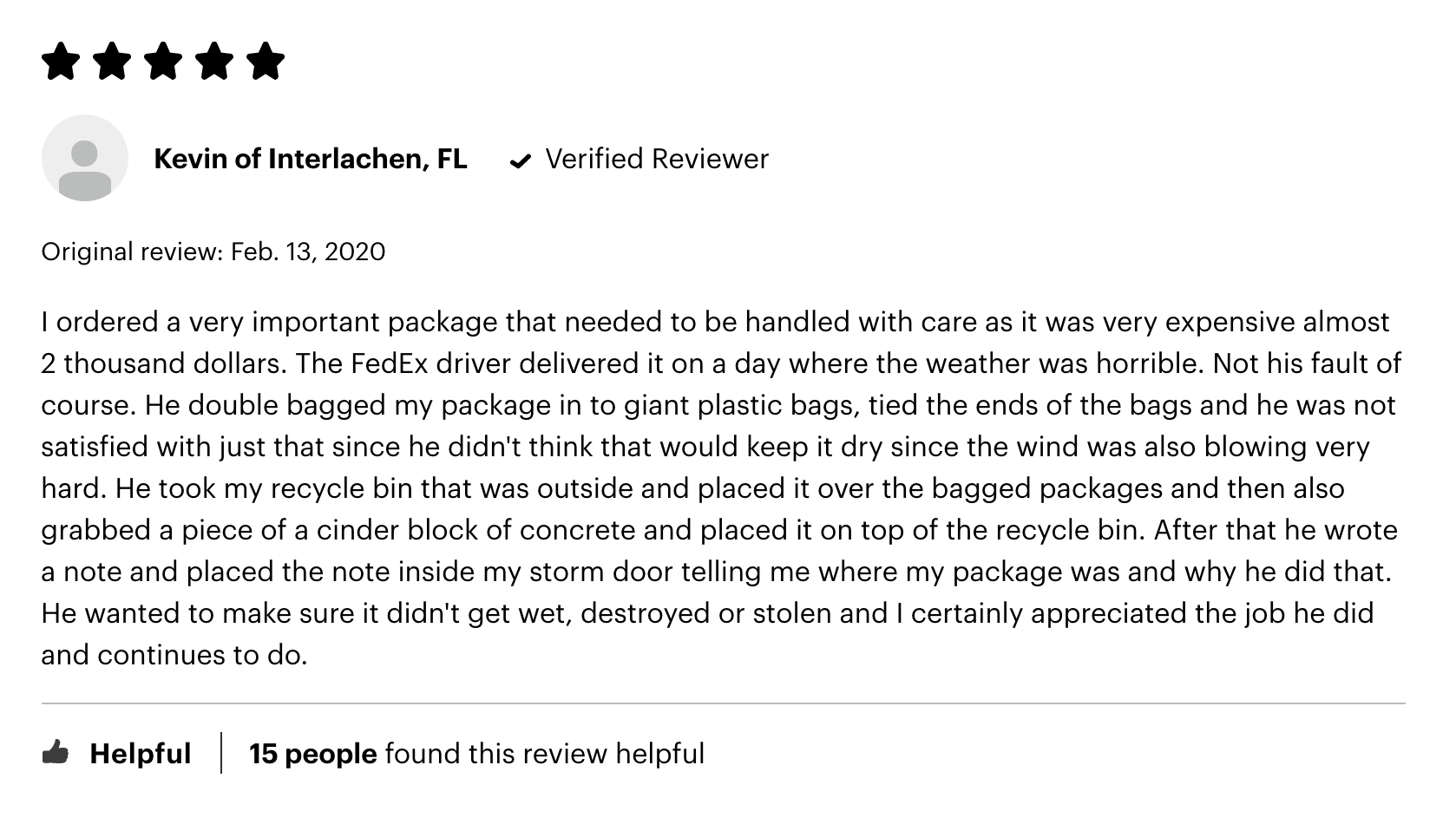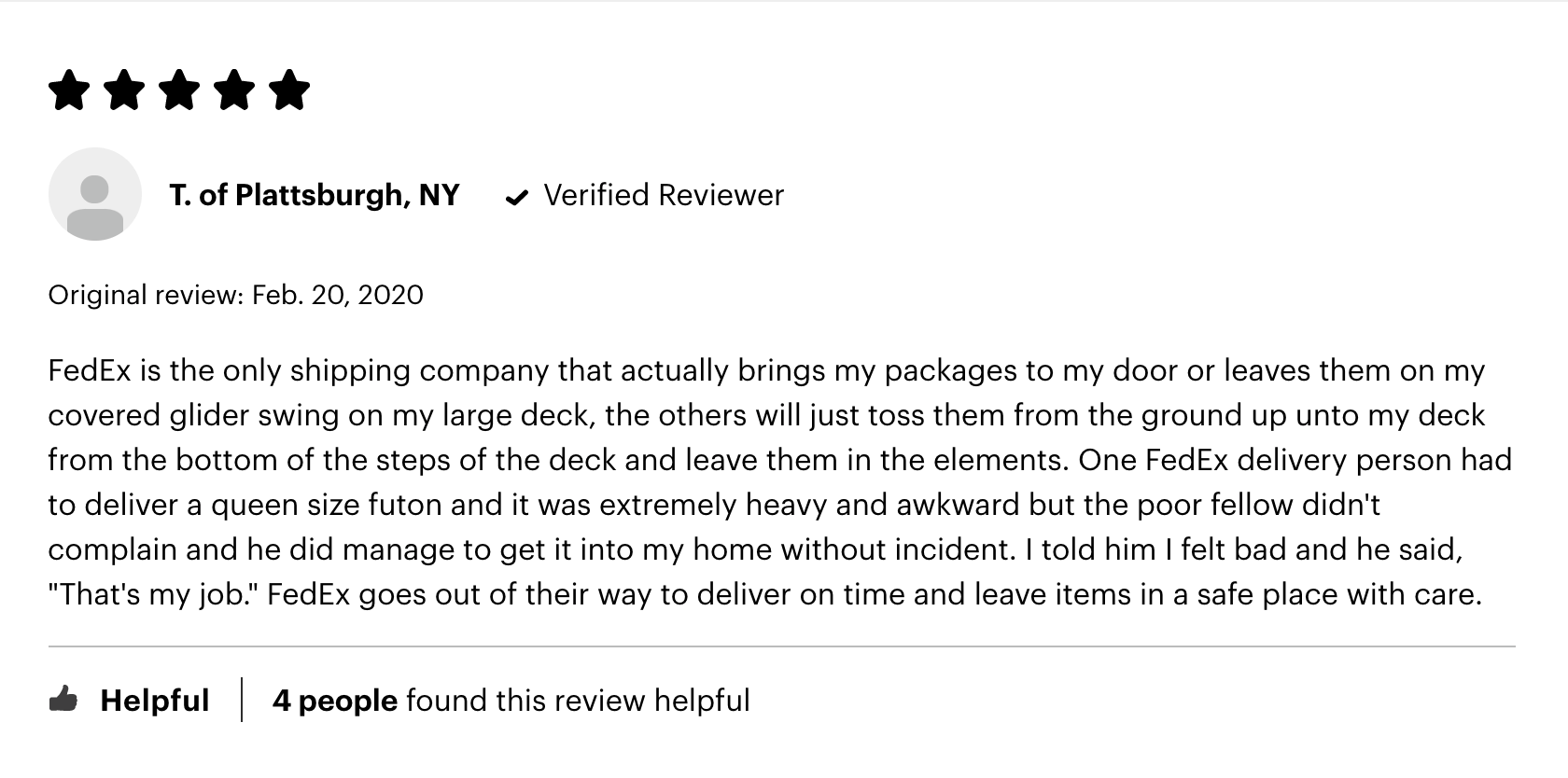
Improve Your Customer Outcomes With 5 Customer Service Best Practices from Leading Consumer Shipping Brand FedEx
Have you ever heard of Shipageddon?
It’s a new term coined by consumer shipping companies to explain the absolute mess of packages they had to deliver in 2020. In fact, we’re still living through Shipageddon.
Shipping companies had their capacities put to the test in 2020, to say the very least. Apparently, I wasn’t the only one to seek comfort in online shopping. Companies, like FedEx, have been dishing out record numbers of packages since March. Then came the holidays.
But even with the surge of couch shopping over the holidays, FedEx still delivered +94% of packages on time. To do it, they hired 70,000 seasonal employees. And, their employees broke record after record with nothing but positivity.
[Download Now] Use your data to predict customer patterns and guide your CX strategies
Companies that break records deserve to be recognized. And on top of one record-breaking year, FedEx also earned love and support from their customers. They scored the highest customer ratings in the consumer shipping industry on ACSI’s Customer Satisfaction Index.
That’s why this month, we’re crushing on FedEx – a company that stepped up in 2020 and delivered for customers.
Let’s dive in on five of the best practices FedEx uses to deliver top-notch customer service.
The 5 Customer Service Best Practices FedEx Uses to Score the Highest Satisfaction Ratings in Their Industry
1. Use data to personalize the customer experience
At Sharpen, we obsess over customer service and share stories of our own experiences with the brands we love (and those that could stand to improve, too).
My coworker chimed in with a story about the best customer service experience he had with FedEx over the holidays. He had to brag about the ease of the interaction when he called FedEx to check on a lost delivery. FedEx’s IVR prompted him to fill in some personal information, and it asked questions to route him to the right agent.
Once he hit the right agent (and fast), he was thrilled to learn that FedEx’s systems all calibrated to work together. He didn’t have to repeat the personal information he already punched in on the IVR. The live agent had access to the info and created a case within a minute of answering the phone. And within 4 minutes, the agent resolved his problem and closed the case.
FedEx puts customer data into action to personalize every service interaction and give agents the info they need to provide knowledge help.
And while my co-worker was initially frustrated with a lost package, the positive service experience still led him to leave a 5-star CSAT score and sing the company’s praises to his peers.
Added customer service bonus: FedEx published their IVR menu, so you can see what click-through options are available ahead of time. That way you don’t have to wait for the automated system to read out every option. Instead, you can punch through to get the help you need immediately.
[Learn More] Capture and use customer information with an omnichannel IVR built to make customer service seamless
2. Hire friendly and helpful representatives
During the pandemic, I’m not sure there was anything more exciting than a fresh parcel arriving on my doorstep. It’s the little things that get us through. Another little thing I looked forward to? A friendly greeting from any and every FedEx driver that turned down my street.
When you’re stuck inside, talking to your cats more than other people, a friendly, human interaction can brighten your whole day. And while FedEx drivers were dealing with swarms of packages to deliver, they still managed to do it with a positive attitude.
And, I’m not the only one who agrees. Glancing through customer reviews, it’s easy to see that FedEx employees are a huge part of what makes every experience with the brand so delightful.
What’s more? Their agents on Twitter are equally friendly and helpful. FedEx staffs a separate Twitter account, called “FedEx Help,” with customer care agents.
And while Twitter is often a breeding ground for complaints, the customer service agents handling FedEx’s account always respond fast, introduce themselves and move conversations to direct messages so they can get the personal info they need to solve each customer’s problem. They handle complaints with poise and do what they can to shift the conversations to a positive outcome.
[Read Next] 3 pillars to managing a healthy customer service team
3. Offer proactive customer service notifications
Proactive customer service lives in every “best practices” playbook. But so many of us get wrapped up in reactive service responses that it’s hard to execute proactive service. FedEx changed that and kicked off a strategy to keep customers in-the-know, all the time.
When a package gets shipped through FedEx, you can opt in to get text messages with notifications on shipping delays, estimated arrival times for your packages and updates as your package moves through each FedEx facility.
According to Brie Carere, Chief Marketing and Communications Officer for FedEx, the 2020 holiday season was unprecedented (are we really shocked?). In an article for USA Today, Carere said the company operated at peak volume starting in March of 2020. So, the holiday season brought higher-than-peak volume. Still though, FedEx kept up with their proactive service model. They kept customers informed on the status of important deliveries, and also saved agents from floods of angry customers looking for their packages.
Chances are if a customer knows you’re running behind, they’re not going to call in just to complain. So, FedEx set upfront expectations with customers and kept them updated on delays and service disruptions ahead of time. Carere shared that transparency with customers is far more critical than anything else. And on that, FedEx delivered.
4. Stock digital channels with self-help resources for customers
In addition to their friendly practices and helpful service reps, FedEx offers a host of self-help options for the DIY customer, too. They’ve broken down common questions into clear and concise Q&As on their site. The Q&As even define potentially confusing terms and go even further, explaining why a customer gets a specific shipping status. Plus, they expand on their questions in detailed guides, mapping out common customer actions and offering step-by-step instructions to help them with routine tasks, like managing deliveries or processing returns.
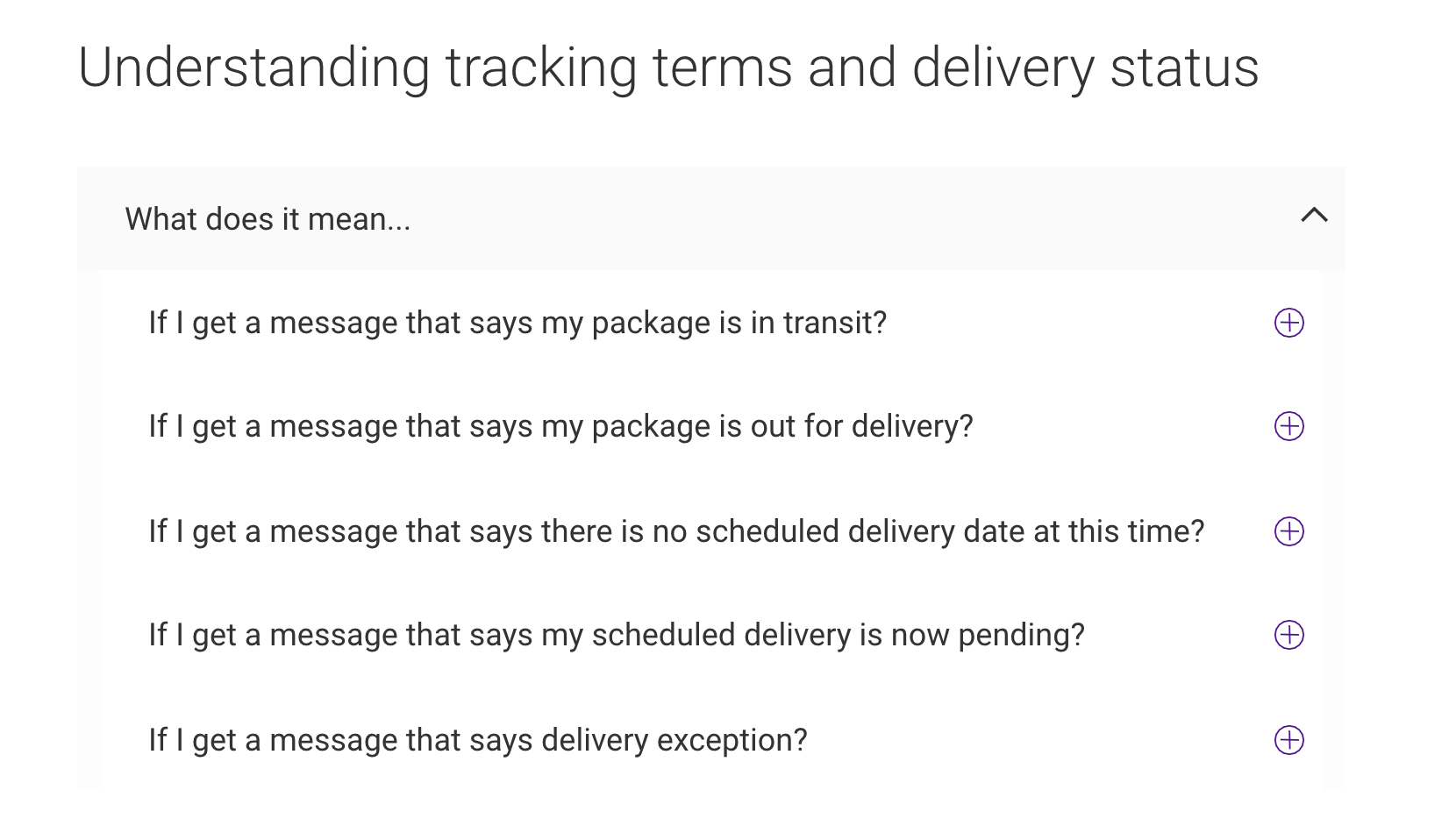

Not only that, but FedEx also automates simple pieces of the customer journey. Putting automation into their journey helps agents keep up with service levels and gives customers fast access to the information they need.
[Read Next] How to stop abandoned calls from ruining your customer outcomes
The company has a virtual customer assistant to help customers with support questions. The support bot sends answers to routine questions like “how do I track a package?”, so customer service agents only handle the interactions that need a live human to problem-solve.
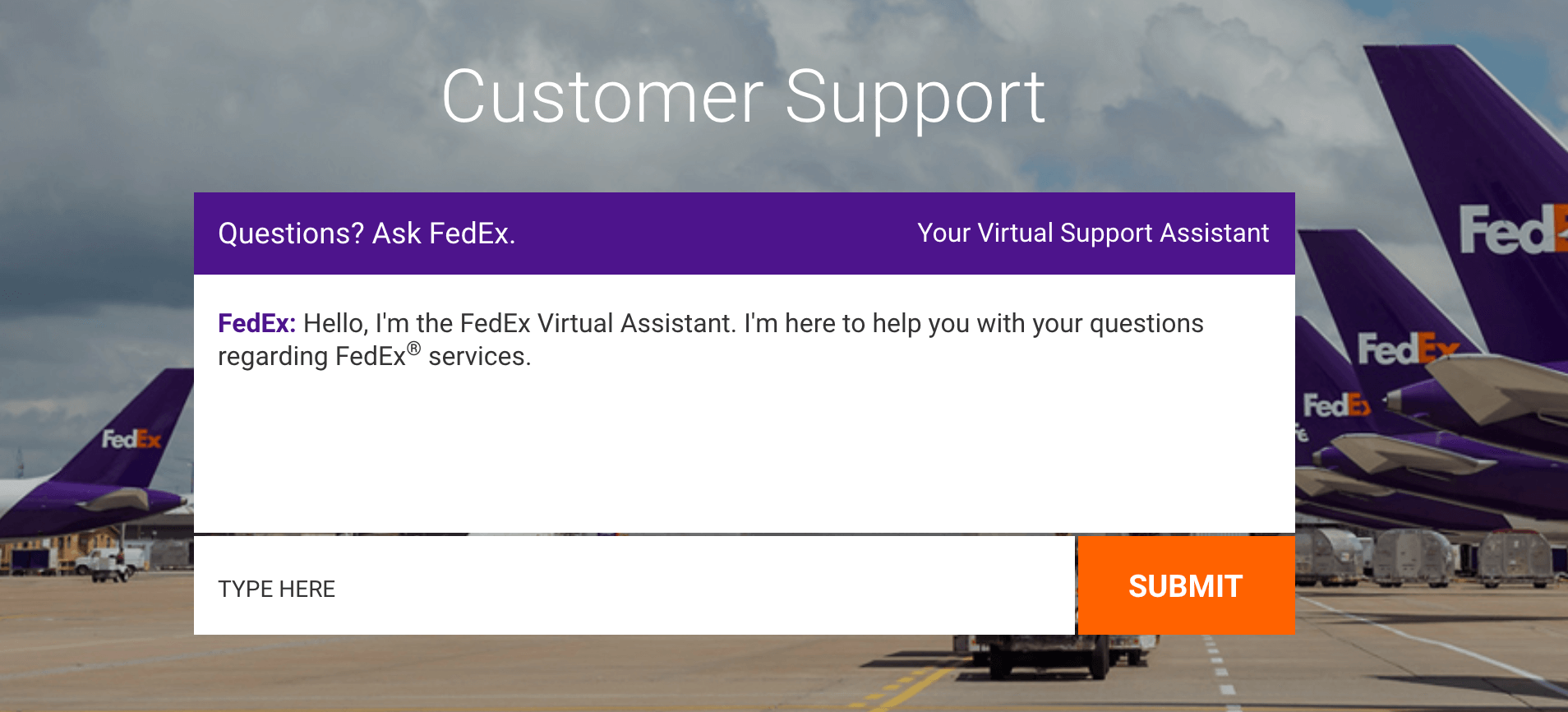
And as you surf through the website, the virtual assistant is available in a chat window to guide you.
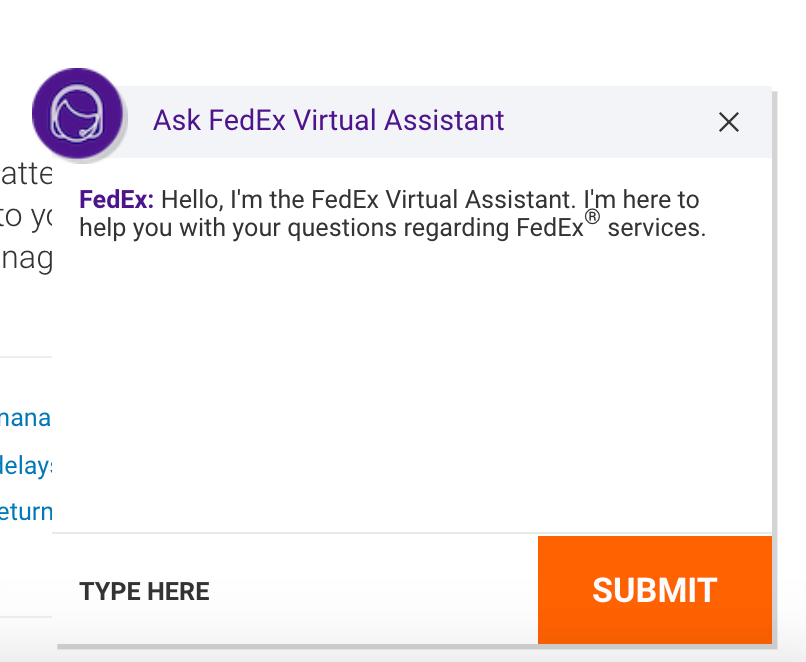
5. Prioritize customers’ security
Worried about someone swiping a package off your porch while you’re stuck working late? As much as we hate to admit, porch thieves exist. Instead of trying to skirt around stolen deliveries, FedEx gives customers options to avoid the worries of package swipers.
They have a service where you can reach out and redirect your package delivery to a secure location. That way if you’re out of town or won’t be home to catch a delivery, you can pick it up at the secure FedEx location after the fact.

They’ve even partnered with other stores, like Walgreens and Dollar General, to offer more convenient locations for package pick-up. All customers have to do is enroll in the (free!) FedEx Delivery Manager and they get access to redirect packages, sign for deliveries from their phone or computer, and schedule pickups at secure locations up to seven days later. What’s more? You can even put a temporary hold on a package for up to two weeks, free of charge. FedEx uses best practices to put every customer first and deliver service that sticks.


